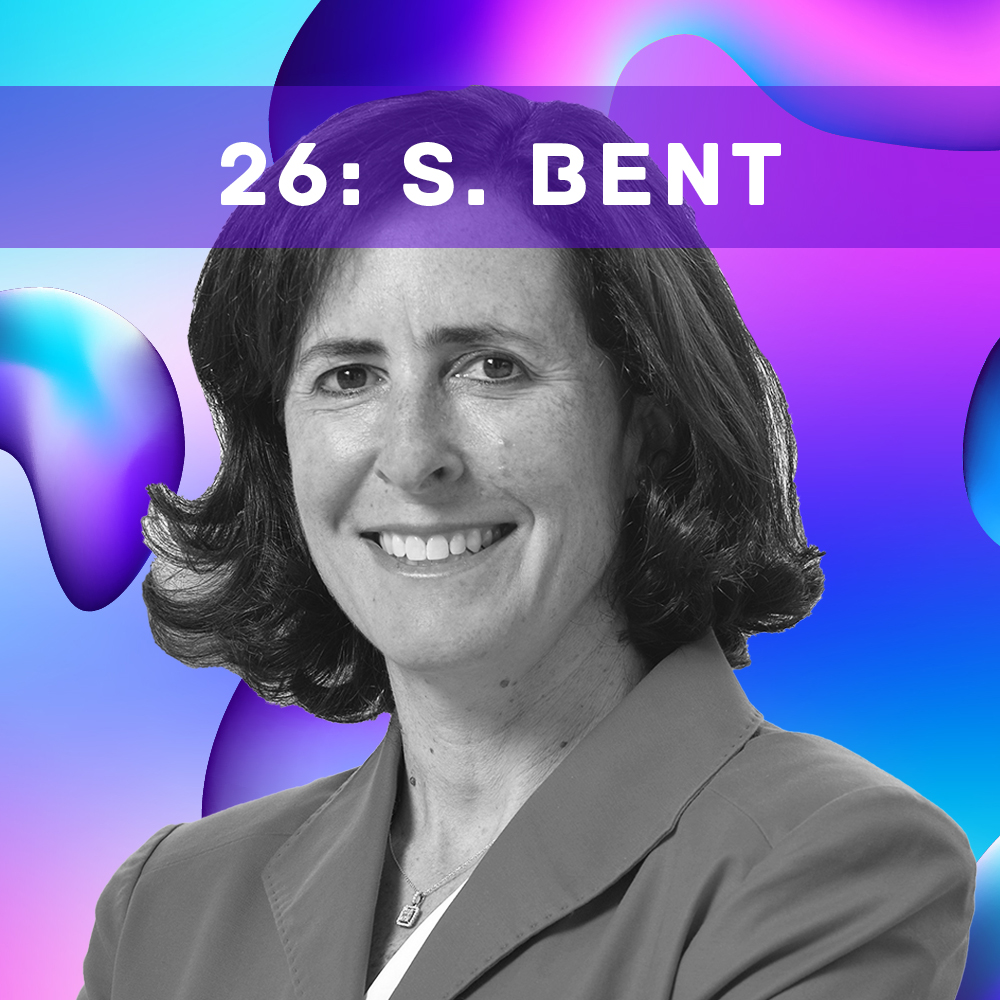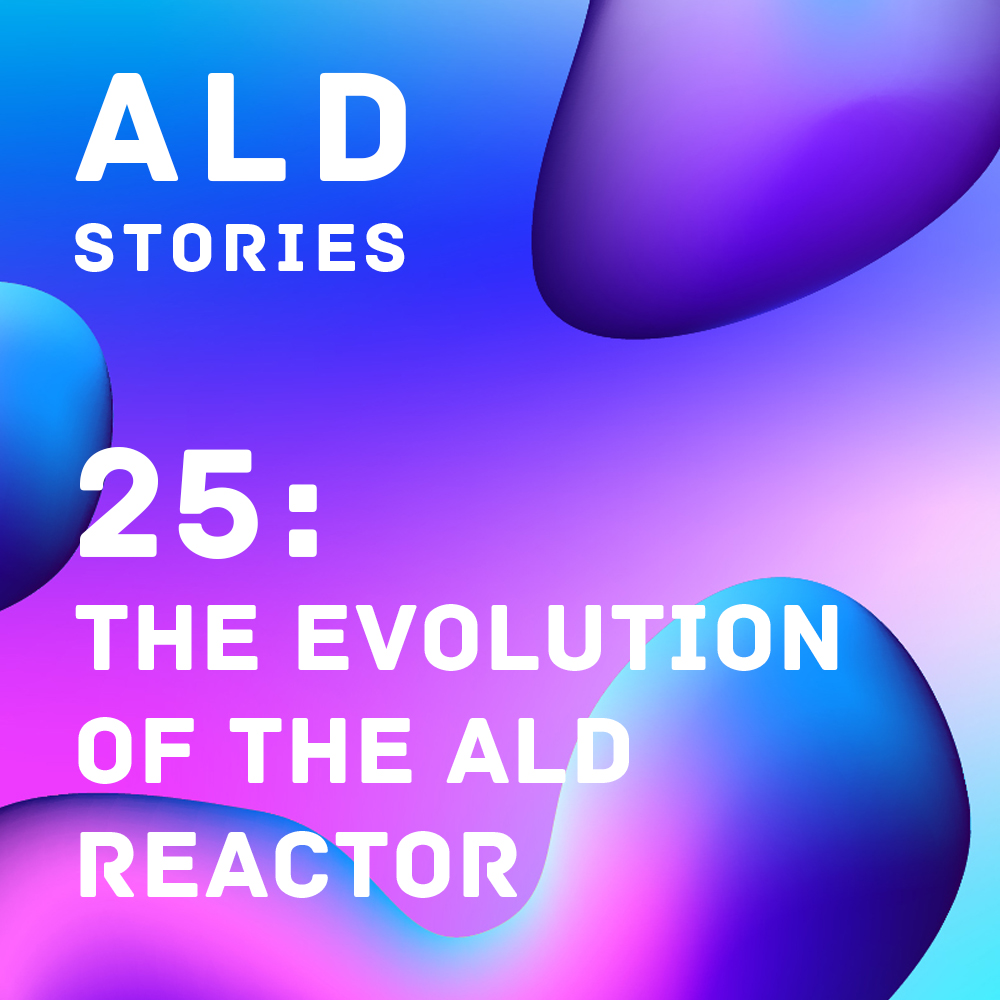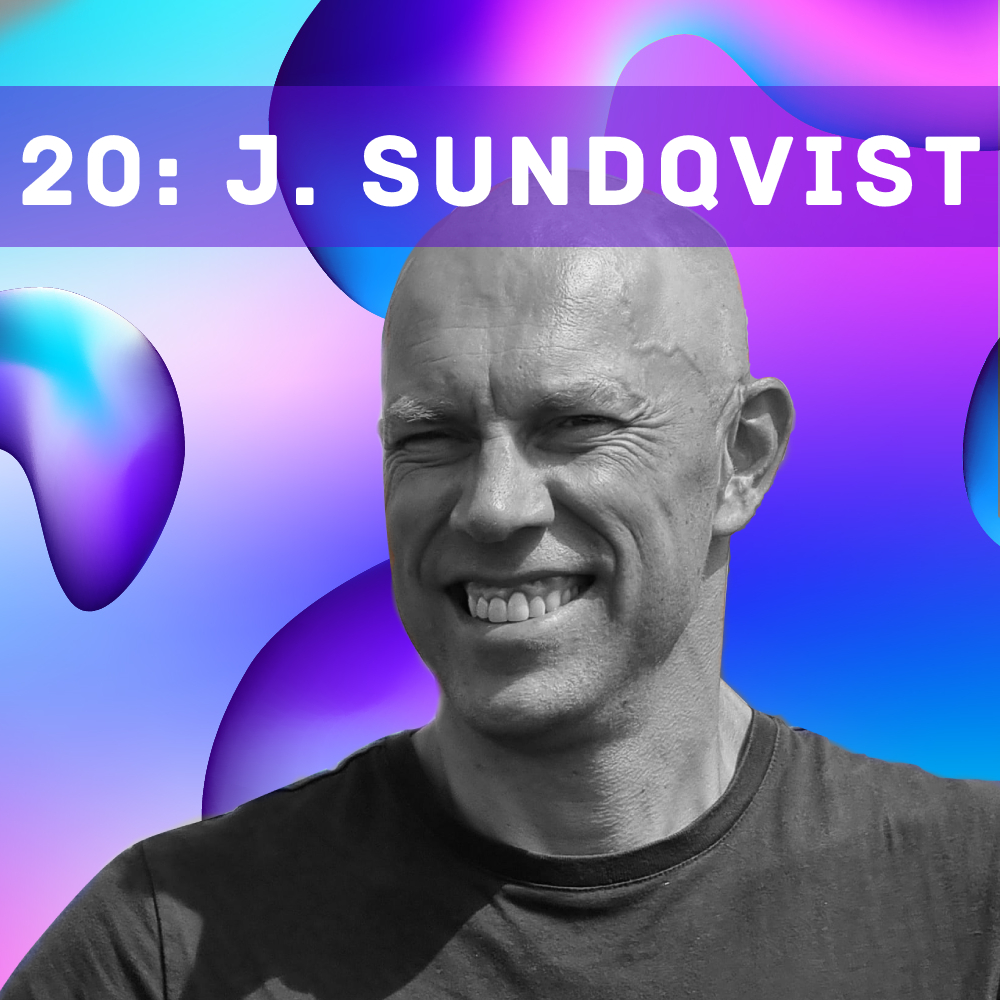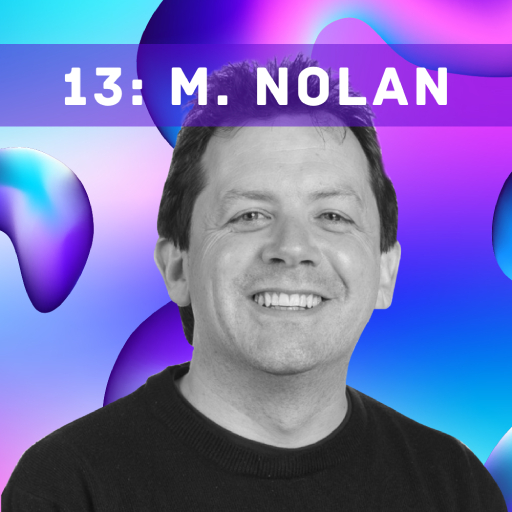32 episodes


Episode 31 features German ALD professor, Dr. Martin Knaut. Martin is the chair for the Institute of Semiconductor and Microsystems Technology at TU Dresden and the atomic layer processing group leader. He is also a founding member of the Atomic Layer Process Innovation Network, or ALPIN, organizer of the annual ALD for Industry event, and runs a small in situ tool development company, called ALS Metrology. With a long career working with ALD in Dresden, at the likes of Infineon and Qimonda, Martin has witnessed the ebbs and flows of the semiconductor industry in the state of Saxony. Martin and Tyler discuss the goal of the Silicon Saxony organization, how we can better recruit students in microelectronics, and why he originally started the Atomic Layer Process Innovation Network. They also discuss his company, ALS Metrology, the importance of using in situ monitoring for process development, and his work on flash-enhanced ALD. In this episode: 00:00 Intro 01:48 Martin’s background & semiconductors in Dresden 10:00 Recruiting issues for microelectronics 17:29 ALPIN & ALD for Industry events 29:34 ALS Metrology 34:57 Importance of in situ monitoring 41:59 Flash-Enhanced ALD 53:55 Concluding remarks


* * In this episode, Tyler is joined by Professor Carl Hägglund from Uppsala University. They discuss Carl’s motivations for pursuing ultrathin solar cells, how he learned ALD at Stanford in Stacey Bent’s lab, and an unlikely research connection through his child’s school. They also talk about why ALD is useful for plasmonic solar cells, optimization of SnS ALD and his planned path towards a fully realized ultrathin photovoltaic. * 00:00 Introduction * 01:45 Motivation for fabricating plasmonic solar cells * 09:58 Learning ALD at Stanford * 22:46 Optimizing SnS ALD process * 30:33 Path towards an ultrathin solar cell


* Dr. Suvi Haukka, former executive technologist at ASM, ASM Fellow and ALD Innovator Awardee, joins Tyler for Episode 29. Suvi began her ALD career at Microchemistry in Finland working on atomic layer epitaxy on catalysts for under the direction of ALD technology inventor, Tuomo Suntola. She continued with Microchemistry as head of the thin film development group before spending most of her time teaching the world’s biggest semiconductor companies, like Intel and Samsung, about ALD. Suvi is one of the integral people in introducing ALD to the semiconductor industry in the 2000s. * Suvi and Tyler discuss how she started working with ALD, what it was like to do a PhD with Tuomo Suntola, and how the make up of Microchemistry changed over the years. We also discuss the circumstances surrounding the ASM acquisition, how development changed under new leadership, and how it felt pitching ALD to the semiconductor industry. * IN THIS EPISODE: * 00:32 Introduction to Microchemistry * 06:01 Doing a PhD with Tuomo Suntola * 19:00 Visiting semiconductor companies * 25:37 Post-ASM acquisition


* In Episode 28 of ALD Stories, Tyler is joined by Aalto University’s Hele Savin. Hele is a professor in the department of Electronics and Nanoengineering where she uses ALD to engineer photovoltaics and semiconductor devices. In 2017, Hele was awarded the women’s innovation prize from the Finnish parliament after fabricating a black silicon solar cell with a record-breaking 22.1% efficiency and currently uses ALD to create induced junction photodiodes with over 100% external quantum efficiency. * Hele and Tyler discuss how she was first exposed to ALD by Beneq, a mindset that using ALD was dirty, and how mind-blowing early ALD passivation results were. We also talk about why ALD oxides are better than thermal SiO2, the theoretical implications of breaking 100% EQE, and upcoming work in up conversion in her lab. * * IN THIS EPISODE: * 00:00 Intro * 07:45 First experience with ALD * 16:37 Passivation of Black Si Solar cells * 29:52 ALD for Induced Junction Diodes * 39:06 Theoretical Implications of High EQE * 47:35 Future Up Conversion work


* For Ep. 27, Dr. Rob Clark from Tokyo Electron joins to discuss his rise from an equipment know-nothing to ALD process engineer extraordinaire. Rob, the self-proclaimed Manipulator of Matter, is a Senior MTS and Technology Director at TEL where he leads process and integration of thin film deposition methods for next-generation semiconductor devices. * Recorded live at ALD ALE 2023 in Washington, Rob and Tyler discuss how he first learned ALD on CVD equipment, the early days of high-k ALD process development, and his work in making some of the first hafnium precursors for ALD integration in semicon at Schumacher. They also talk about his time as the only engineer at NanoFab North in Albany, how incredibly advanced semiconductor technology has become, and what the next decade of ALD research might look like. * IN THIS EPISODE: * 00:00 Introduction * 01:58 Post-grad at Schumacher * 13:23 Learning the ALD ropes * 19:16 Early HfO2 process development * 23:40 Albany, NY Semi ecosystem * 32:32 ALD process development insights * 42:24 How cool are semiconductors?!’ * 49:44 Rob’s ALD Outlook


In Episode 26, Professor Stacey Bent from Stanford University joins to discuss all aspects of her career, including early area selective deposition work, how her different academic appointments in chemistry and engineering have influenced the direction of her work, and how ALD can be used in energy applications. Stacey and Tyler also chat about how Stacey finds the best paths for her students, how being a professor and Vice Provost feedback to each other, and new programs she has initiated in her Vice Provost position. In this episode: 00:00 Introduction 03:45 Area Selective Work 15:40 Chemistry & Engineering Backgrounds 21:20 ALD for energy applications 33:54 Stacey as an advisor 36:19 Vice Provost position


* In its short 50 years of existence, the history of ALD has been of great interest, being heavily researched and documented in the last decade. One can follow the story from many lenses: one in particular is to view the technology’s development is through an equipment perspective. Each milestone in process technology was accompanied and enabled by new ALD tools. Without innovative equipment design, we would not have the vast ALD ecosystem we do today. Via patents and literature, this ALDeep Dive will journey the evolution of the ALD reactor. It starts from Tuomo Suntola’s original reactor and IP, moves through the early days of commercial reactors, explore the introduction of plasma, powder and spatial tools, and wrap up with today’s equipment landscape and thoughts on the personal aspect of ALD reactors. * * IN THIS EPISODE: * 00:00 - Intro * 01:33 – Suntola’s 1st Reactor * 03:15 – Suntola’s Patented Configurations * 07:38 – The First Commercial Reactor * 10:50 – Plasma, Please * 15:20 – Powder ALD Reactors * 20:37 – Reintroduction of Spatial ALD * 24:10 – Today’s ALD Tool Landscape * 25:43 – Concluding Thoughts * * IMPORTANT PAPERS & PATENTS * Chem. Vap. Dep. 2014, 20, 10-11-12, 332-344 * T. Suntola, J. Antson, International patent, FIN 52359, US 4 058 430, priority Nov 29, 1974, publication Nov 15, 1977. * T. Suntola, A. Pakkala, S. Lindfors, International patent, FIN 57975, US 4 413 022, priority Feb 28, 1979, publication Nov 1, 1983. * J. Vac. Sci. Technol. A, Vol.29, No.5, Sep/Oct 2011 * J. Vac. Sci. Technol. A 25 (5) Sep/Oct 2007 * Applied Physics Letters 92, 192101 (2008) * Journal of Vacuum Science & Technology A 30, 021502 (2012)


* Dr. Fred Roozeboom joins ALD Stories for Ep. 25. Fred spent most of his career in the semiconductor industry at Philips and NXP working on rapid thermal processing and passive integration. He pivoted to ALD at the TNO Holste Centre and now finds himself at his alma mater, University of Twente. Fred was recently awarded the Gordon E. Moore Medal for Outstanding Achievement in Solid State Science and Technology from the ElectroChemical Society. Fred and Tyler talk about the semiconductor industry in the 80’s, his original RTP work at Phillips, and the importance of passive integration. They also discuss the Medtronic pacemaker, his world record during the great reintroduction of spatial ALD and the applications he’s most excited to see come to life with atomic layer deposition. * * In this episode: * 00:00 Introduction * 01:43 Semiconductor Industry in the 80’s * 07:59 Rapid Thermal Processing & Creation of NXP * 19:32 Passive Integration & 3D Silicon * 33:41 Pivot to ALD * 46:48 Fred’s ALD Outlook * * #ALDep #semiconductors #nanotechnology


* In Episode 23 of ALD Stories, Dr. Harm Knoops joins Tyler to discuss his dual role at Eindhoven University and Oxford Instruments Plasma Technologies. As an Atomic Scale Specialist, Harm routinely advises on processes in ALD, ALE and 2D materials while informing their work with supplemental research at Eindhoven. Harm and Tyler talk about alternatives careers to the traditional industry and academia binary, how scientists can leverage their technical knowledge, and how working in a cross-institute position makes for efficient science. We also touch on Harm’s work with plasmas, tackle misconceptions about plasma conformality, and how Harm approaches learning new topics. * In this episode: * 00:00 Intro * 01:20 Working in both industry & academia * 11:45 Careers leveraging technical backgrounds * 24:20 Misconceptions about plasma conformality * 43:20 How to learn new fields quickly * #ALDep #ALEtch #nanotechnology


* Professor Sean Barry from Carleton University joins Tyler on Episode 22 of ALD Stories. Sean recalls his time working at the University of Helsinki and a mishap or two in Mikko Ritala’s lab, how the Finnish ethos inspires him, and why he considers Helsinki his second city. Sean also talks about how knowledge of fundamental chemistry is important for understanding atomic layer deposition, why he decided to write a book on the topic, and how chemistry informed the evolution of gold ALD. * IN THIS EPISODE: * 00:00 Intro * 01:22 Living in Helsinki * 09:30 Sean’s background and Harvard ALD * 21:00 Evolution of Au ALD * 32:05 Sean’s book * 45:17 What material is Sean’s dream? * 50:23 Sean’s sage wisdom * #ALDep #nanotechnology #chemistry #ALDStories


* In Episode 21, John Hennessy from NASA’s Jet Propulsion Lab joins ALD Stories to talk about his work using ALD to deposit UV coatings for astronomical imaging applications. John talks about the relationship between NASA and JPL, how UV coatings allow us to see more of the universe, and how the technology has improved since the Hubble Space Telescope. John and Tyler also discuss how to test the readiness of devices for eventual launch and NASA’s Decadal Survey for deciding new mission concepts. * In this episode: * 00:00 Intro * 01:48 John’s Background * 09:49 NASA/JPL Relationship * 14:05 UV Coatings, Detectors and Telescopes * 31:51 Testing coatings for launch * 40:30 NASA Decadal Survey * 46:49 Outlook and Outro * * #ALDep #ALDStories #optics #space #nanotechnology


* In Episode 20, Jonas Sundqvist, ALD researcher, entrepreneur and consultant joins Tyler for his 3rd time on the show to talk about his company, AlixLabs (Eps. 4 & 7). AlixLabs has developed a cutting-edge technology called Atomic Pitch Splitting (APS) which utilizes a topographically-selective atomic layer etching process. Jonas discusses how APS works, why they could potentially pattern substrates without the use of multiple lithography steps, and how AlixLabs can offer semiconductor manufacturers with a simpler, more cost-effective and more precise method of creating features with nanometer spacings. * In this episode: * 00:00 Introduction * 02:55 AlixLabs and APS Background * 08:30 Topographical Selectivity * 13:30 APS vs Traditional Patterning * 24:30 Cost and Implementation * 33:05 AlixLabs Outlook


Tyler is joined by Dr. Jeffrey Elam from Argonne National Lab in Chicago. Jeff is the head of the Atomic Layer Deposition research program at Argonne and has received numerous awards, accolades and patents for his work, the ALD Innovator Award and Lifetime Achievement Award at Argonne as examples. In this episode, Tyler and Jeff discuss his time as a post doc in the Steven George lab where he built the first ALD reactors, how he began the ALD group at Argonne, and some of his award-winning work on fabricating large-area microchannel plates. 02:10 Early ALD in the George Group 14:55 Bringing ALD to Argonne 29:44 Microchannel Plates 44:51 Outlook & Final Remarks #ALDep #nanotechnology


* In Episode 18, Professor Parag Banerjee from the University of Central Florida joins Tyler to chat about his less-than-traditional path in ALD. Parag was a Process Engineer at Micron during the time ALD was first being implemented into their manufacturing workflows. Parag tells Tyler about his role at Micron, how Micron handled the addition of ALD, his decision to return to academia and what’s happening at his lab in Florida. * In this episode: * 00:00 Introduction * 01:49 Time at Micron * 21:30 Journey back to academia * 36:46 Banerjee Lab @UCF * * Follow Parag and his work at www.paragbanerjee.wixsite.com/website http://www.paragbanerjee.wixsite.com/website and www.prem.cecs.ucf.edu * #ALDep #semiconductors


* In Episode 18, Professor Parag Banerjee from the University of Central Florida joins Tyler to chat about his less-than-traditional path in ALD. Parag was a Process Engineer at Micron during the time ALD was first being implemented into their manufacturing workflows. Parag tells Tyler about his role at Micron, how Micron handled the addition of ALD, his decision to return to academia and what’s happening at his lab in Florida. * In this episode: * 00:00 Introduction * 01:49 Time at Micron * 21:30 Journey back to academia * 36:46 Banerjee Lab @UCF * * Follow Parag and his work at www.paragbanerjee.wixsite.com/website http://www.paragbanerjee.wixsite.com/website and www.prem.cecs.ucf.edu * #ALDep #semiconductors


In Episode 17, Tyler speaks with Matthias Young from the University of Missouri, aka Mizzou. Matthias talks about this use of oxidative MLD for depositing redox active polymer films which paves the way for more cost-effective electrode materials. Matthias and Tyler discuss his journey to, from and back to ALD, how working in other fields can benefit your creativity, results from his recent work in oMLD paper, and how ALD can be used as a tool for understanding fundamental questions about tricky surface phenomena. In this episode: 00:00 Introduction 02:46 Matthias’ Journey Away from ALD 08:25 ALD Community 17:40 Tech Talk: Redox Active Polymers 35:38 Applications: Capacitive Deionization & Solid State Batteries 43:30 Advice, Reflection and Outro Follow Matthias at thinfilmgroup.missouri.edu and on Twitter @MatthiasJYoung #ALDep #MLDep #energy


Episode 16 features Dr. Maksym Plakhotnyuk, the CEO and Founder of Atlant 3D Nanosystems. Atlant 3D produces the world's first reactor for direct writing of ALD - the ultimate area-selective ALD process. Their Nanofabricator tool will could be the enabling technology for on-demand printing of microelectronics. In this episode, Maksym tells Tyler about the company's origins, their deal with NASA to create a 0G ALD reactor and Maksym's own history as an entrepreneuer. In this episode: 00:00 - Introduction 01:53 - Maksym's Background & Atlant 3D Roots 19:03 - Atlant 3D Name Origins 22:00 - Atlant 3D Microreactor 36:28 - NASA Deal and 0G Reactor Follow Maksym and Atlant 3D on Twitter: @MPlakhotnyuk & @Atlant3d


Back for her second episode, Professor Riikka Puurunen is bringing us back to the basics with a deep dive on conformality. Recorded live from the Harald Herlin Learning Center at Aalto University, Tyler and Riikka talk about the all-important property of ALD. In this episode, Riikka explains the history of conformality in ALD, her recent paper on modeling collaboration, the origins of the PillarHall conformality test structures and a conversation on open science. In this episode: 00:00 Intro 03:39 History of conformality 10:21 Has our understanding of conformality changed? 12:25 Is conformality an inherent property? 18:38 Conformality modeling findings 37:28 PillarHall Test Structures 49:35 Open Learning for ALD Follow Riikka at @rlpuu on Twitter and at www.aalto.fi http://www.aalto.fi/. ALD History Blog: http://aldhistory.blogspot.com/ Virtual Project on the History of ALD: https://vph-ald.com/ https://vph-ald.com/ Open ALD Learning Site (Hosted by Aalto): https://openlearning.aalto.fi/course/view.php?id=100#section-0


In Episode 13, Tyler chats with Michael Nolan from the Tyndall National Institute in Ireland. Michael specializes in molecular and atomistic modeling, using his expertise to help predict, understand, and screen ALD precursors and chemistries. Mike and Tyler talk about all things modeling, including basics for modeling ALD reactions, limitations of current modeling efforts, and how theorists and experimentalists can powerfully work together. Enjoy! In this episode: 00:00 Intro 01:48 Michael’s Background & Tyndall National Institute 11:03 Modeling Basics 26:09 Modeling Limitations 31:09 Intersection of Experimentation and Modeling 38:27 Future of ALD Modeling 47:52 Electron Explosions? 52:27 Wrap up & Outro Follow Mike on Twitter @Mick_geek Follow Tyler on Twitter @TyMytheALDGuy


Episode 12 brings Tyler to Colorado where he chats with Arrelaine Dameron, VP of R&D at ForgeNano and an old friend from graduate school. ForgeNano is an ALD equipment supplier specializing in particle ALD for battery, catalysis, and pharmaceutical applications. The two talk about ALD at battery interfaces, love for the ALD community and ForgeNano’s recent activities, including their move to a new facility. In this episode: 00:00 Introduction & Careers in ALD 05:03 Battery Interface Coatings 27:35 Arrelaine’s Background and ForgeNano Activities 37:40 Ending & Outro Follow Arrelaine and Forge Nano at www.forgenano.com Follow Tyler at @TyMytheALDGuy #ALDep #battery


* From the corner of one continent to another, Professor David Bergsman joins Tyler from the University of Washington in Seattle. David discusses his use of vapor phase infiltration as a method of fabricating new membrane structures inspired by his work in Stacey Bent’s lab at Stanford and how he started an ALD lab during a pandemic. * IN THIS VIDEO: * 00:00 – Introduction * 02:01 – David’s Background & MLD * 08:02 – Membrane Fabrication and Property Challenges * 17:19 – Vapor Phase Infiltration * 37:36 – Starting an ALD lab * 48:30 – Ending & Outro * Follow Professor David Bergsman on Twitter @DavidBergsman and learn about his research group in Seattle at www.bergsmangroup.com http://www.bergsmangroup.com/


In the 10th installment of ALD Stories, Tyler meets up with Professor Mikko Ritala at the University of Helsinki. A professor of chemistry and renowned ALD scientist, Mikko has been working with ALD since the 90s. Following a stellar lab tour, Tyler and Mikko discuss ALD activities at the University of Helsinki, including their new tools, work on area-selective processing and partnership with ASM Microchemistry. In this video: 00:00 – Intro 02:30 – The Ritala Lab 09:33 – ALD in the Past 17:05 – Helsinki ALD Cluster Tool 24:26 – Area-Selective ALD & ALE 43:36 – Partnership with ASM 47:49 – Ending & Outro Follow Mikko and the Helsinki ALD Group on Twitter at @mikkoritala & @HelsinkiALD Read about the Helsinki ALD Group’s work here: https://www2.helsinki.fi/en/researchgroups/helsinkiald Follow Tyler on Twitter @TyMyTheALDGuy


In Episode 9, Tyler gets schooled on particle ALD with Delft University of Technology professor, Ruud van Ommen. The duo discuss challenges associated with doing ALD on powders, scale up strategies, Ruud's work on coating pharmaceutical powders, and atomic layer etching of particles. Follow Ruud on Twitter @JRvanOmmen and find his research page here: https://www.tudelft.nl/tnw/over-faculteit/afdelingen/chemical-engineering/principal-scientists/ruud-van-ommen Follow Tyler on Twitter @TyMytheALDGuy


In Episode 8 of ALD Stories, Tyler chats with Eindhoven University of Technology professor, Erwin Kessels, about plasma-enhanced ALD, industry applications, and Erwin's Atomic Limits blog & teaching strategies. Professor Erwin Kessels - https://www.tue.nl/en/research/researchers/erwin-kessels/ Atomic Limits Blog - https://www.atomiclimits.com/ Follow on social media: Tyler - @TyMytheALDGuy Erwin - @ErwinKessels


Professors Henrik Pedersen, Sean Barry, and Jonas Sundqvist join Tyler to discuss their recent publication in JVSTA about Green CVD. The trio talk about the conception of a new research field which concerns creating more sustainable thin film deposition practices without sacrificing film quality and offers some perspective on a number of areas and strategies addressed in the manuscript. Read the paper here: https://avs.scitation.org/doi/10.1116/6.0001125


Tyler sits down with Wayne State University’s Chuck Winter to talk about his approach to designing precursors for ALD. Chuck explains what makes a good ALD precursor and how elegant organic chemistry can enable ALD processes for hard-to-deposit metals, like cobalt and aluminum. Learn more about Chuck’s research here: http://www.clas.wayne.edu/wintergroup/ Papers mentioned in this episode: https://doi.org/10.1021/acs.chemmater.7b02456 - Co metal ALD https://doi.org/10.1021/acs.chemmater.8b00445 - Al metal ALD


On this episode of the ALD Stories podcast, We speak to Dr. Katja Väyrynen, Process Development Engineer at Beneq. What is the latest ALD research on improving the performance of microchips? Will cobalt become a popular material in semiconductor manufacturing? Hear her academic journey below.


In this episode we speak to Dr. Jonas Sundqvist, founder of BALD Engineering Blog and a senior researcher and consultant of ALD/ CVD processes.


In Episode 3 of ALD Stories, we meet with Professor Jan Macak from the University of Pardubice. Hear his findings on ALD as an exceptional way to tailor the functionality of nanostructures, and the overlooked steps for making the perfect TiO2 nanotube.

